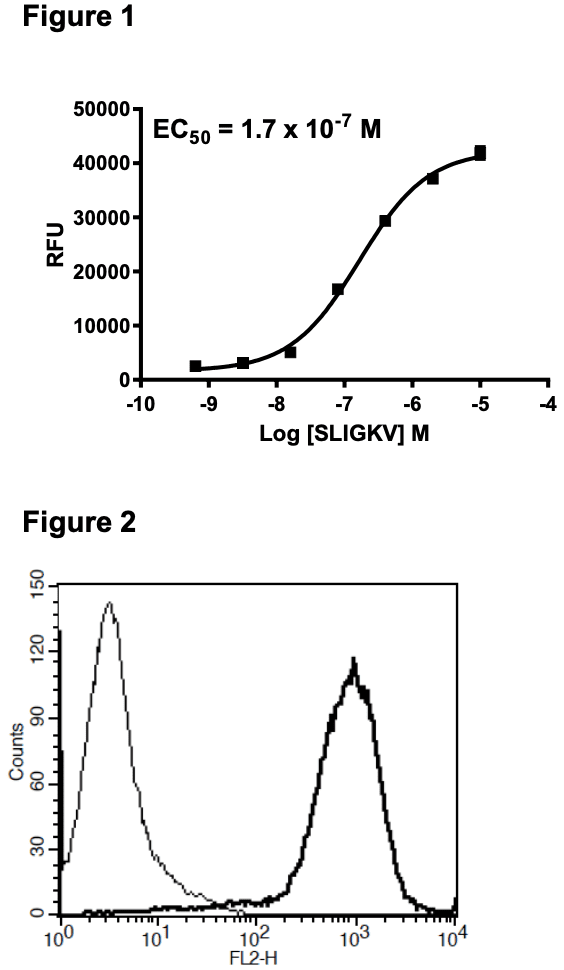Product Information
Catalog Number:
C1208-7
Lot Number:
C1208-7-061014
Quantity:
1 vial (2 x 106) frozen cells
Freeze Medium:
Sigma Freezing Medium (C-6164)
Host cell:
Hela
Transfection:
Expression vector containing full-length human PAR2 cDNA (GenBank Accession Number NM_005242.4) with FLAG tag sequence at N-terminus
Recommended Storage:
Liquid nitrogen upon receiving
Propagation Medium: DMEM/F12, 10% FBS, 1X NEAA, 1 µg/mL puromycin
Stability:
Stable in culture for a minimum of 2 months
Data Sheet
Background: PAR-2 (protease-activated receptor 2) is a G-protein-coupled receptor activated by certain serine proteases such as trypsin and tryptase. It is widely distributed in the body in various tissues, and is involved in the alimentary, circulatory, respiratory and neuronal systems. In the gastric mucosa, PAR-2 modulates multiple functions and exerts mucosal cytoprotection mainly by activating sensory neurons. Thus, PAR-2 may be an important therapeutic target for treatment of gastric mucosal injury. Other research have shown PAR-2 to play an important role in vascular diseases. PAR2-derived peptide agonists have been shown to reduce vascular tone, and therefore increase blood flow. A mechanism for PAR2-mediated endothelial- dependent relaxation and hyperpolarization of vascular smooth muscle in select arterial vascular beds suggests a strategy for correction of endothelium-based vascular dysfunction. In diseases and conditions such as atherosclerosis or to injury, vascular tissue show variable changes of PAR-2 expression. PAR-2 agonists and antagonists may become leads for a new class of therapeutic agents for treatment of vascular diseases.
Application: Functional assays

Figure 1. Dose-dependent stimulation of calcium flux upon treatment with ligand, measured with MultiscreenTM Calcium 1.0 No Wash Assay Kit (Multispan MSCA01). Figure 2. Receptor expression on cell surface measured by flow cytometry (FACS) using an anti-FLAG antibody. Thin line: parental cells; thick line: receptor-expressing cells.
References:
Kawabata, A. (2002) PAR-2: structure, function and relevance to human diseases of the gastric mucosa. Expert Rev Mol Med. 4(16):1-17.
McGuire, JJ. (2004) Proteinase-activated Receptor 2 (PAR2): a challenging new target for treatment of vascular diseases. Curr Pharm Des. 10(22):2769-78.
